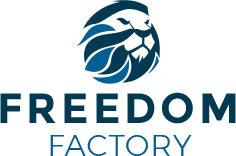To keep knowing and advancing your career, the list below resources will be valuable:.
Growth equity is frequently referred to as the personal financial investment method inhabiting the happy medium in between endeavor capital and conventional leveraged buyout techniques. While this may be true, the strategy has actually developed into more than just an intermediate personal investing approach. Growth equity is often referred to tyler tysdal denver as the personal investment technique occupying the happy medium between equity capital and standard leveraged buyout methods.
This combination of aspects can be engaging in any environment, and even more so in the latter stages of the marketplace cycle. Was this short article useful? Yes, No, END NOTES (1) Source: National Center for the Middle Market. Q3 2018. (2) Source: Credit Suisse, "The Incredible Shrinking Universe of Stocks: The Causes and Consequences of Fewer U.S.
Option financial investments are intricate, speculative financial investment vehicles and are not suitable for all financiers. An investment in an alternative investment requires a high degree of risk and no assurance can be considered that any alternative investment fund's financial investment objectives will be attained or that financiers will receive a return of their capital.
This market details and its significance is an opinion only and must not be relied upon as the just essential information available. Details included herein has been gotten from sources thought to be dependable, but not guaranteed, and i, Capital Network presumes no liability for the information offered. This information is the residential or commercial property of i, Capital Network.
This investment technique has helped coin the term "Leveraged Buyout" (LBO). LBOs are the primary financial investment strategy type of the majority of Private Equity firms.

As pointed out earlier, the most well-known of these deals was KKR's $31. 1 billion RJR Nabisco buyout. This was the largest leveraged buyout ever at the time, numerous individuals thought at the time that the RJR Nabisco offer represented the end of the private equity boom of the 1980s, due to the fact that KKR's investment, however famous, was ultimately a considerable failure for the KKR financiers who purchased the business.
In addition, a great deal of the money that was raised in the boom years (2005-2007) still has yet to be utilized for buyouts. This overhang of dedicated capital avoids numerous financiers from committing to buy new PE funds. In general, it is approximated that PE companies handle over $2 trillion in possessions worldwide today, with near $1 trillion in dedicated capital offered to make new PE financial investments (this capital is often called "dry powder" in the market). .

A preliminary financial investment could be seed funding for the business to start constructing its operations. In the future, if the company proves that it has a feasible item, it can obtain Series A financing for more growth. A start-up company can complete several rounds of series funding prior to going public or being gotten by a monetary sponsor or strategic buyer.
Leading LBO PE firms are characterized by their large fund size; they have the ability to make the biggest buyouts and take on the most debt. LBO transactions come in all shapes and sizes. Total deal sizes can range from 10s of millions to tens of billions of dollars, and can happen on target companies in a variety of industries and sectors.
Prior to carrying out a distressed buyout chance, a distressed buyout company has to make judgments about the target business's value, the survivability, the legal and restructuring concerns that might emerge (must the business's distressed possessions need to be restructured), and whether the financial institutions of the target business will become equity holders.
The PE company is needed to invest each particular fund's capital within a period of about 5-7 years and after that normally has another 5-7 years to offer (exit) the financial investments. PE firms normally utilize about 90% of the balance of their funds for brand-new investments, and reserve about 10% for capital to be used by their portfolio business (bolt-on acquisitions, additional available capital, etc.).
Fund 1's dedicated capital is being invested gradually, and being gone back to the minimal partners as the portfolio business because fund are being exited/sold. As a PE firm nears https://www.atoallinks.com/2021/5-key-types-of-private-equity-strategies-tysdal-2/ the end of Fund 1, it will need to raise a brand-new fund from new and existing restricted partners to sustain its operations.